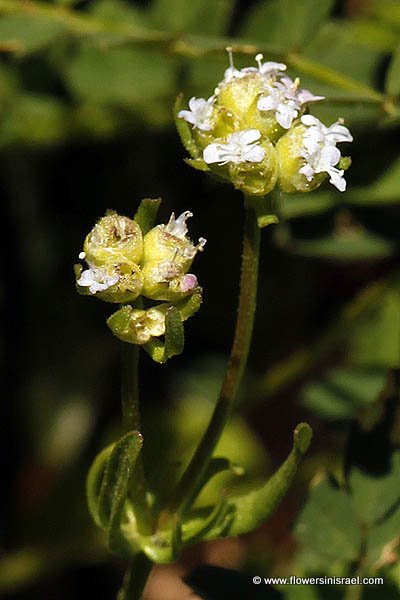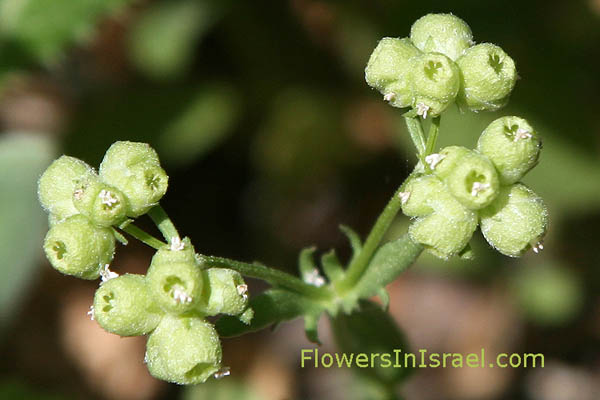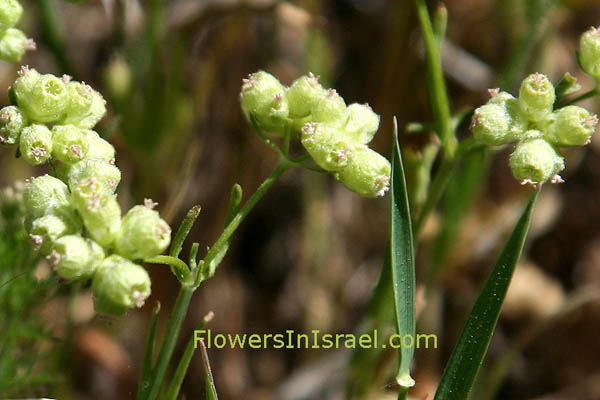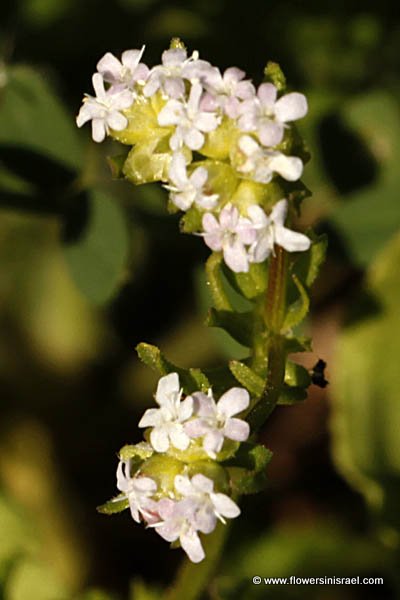Bladder Corn Salad,
Hebrew: ולריינית משולחפת, Arabic: خَسّ النَّعْجَة
| Scientific name: | Valerianella vesicaria (L.) Moench | |
| Synonym name: | Valerianella locusta var. vesicaria L. | |
| Common name: | Bladder Corn Salad | |
| Hebrew name: | ולריינית משולחפת | |
| Hebrew name: | خَسّ النَّعْجَة | |
| Family: | Valerianaceae, ולריניים |

|
| Life form: | Annual | |
| Stems: | 5-10cm; hairy; tufted spreading | |
| Leaves: | Opposite | |
| Flowers: | Hermaphrodite; symmetrical cyme; 6 yellow, green sepals; corolla tubular, 5 white, lilac petals | |
| Fruits / pods: | Swollen hairy achene; dense clusters, with 3 loculi among which only one is fertile | |
| Flowering Period: | March, April | |
| Habitat: | Batha, Phrygana | |
| Distribution: | The Mediterranean Woodlands and Shrublands, Semi-steppe shrublands, Shrub-steppes, Deserts and extreme deserts, Montane vegetation of Mt. Hermon | |
| Chorotype: | Med - Irano-Turanian | |
| Summer shedding: | Ephemeral |

Derivation of the botanical name: Valerianella, Diminitive of Valeriana, from the resemblance to Valeriana of these herbs; valere, "to be healthy" vesicaria, vesica, a bladder; bladder-like; from the inflated pods following the flowers on these herbs. The Hebrew name: ולריינית, valerianit, from the European language.


|